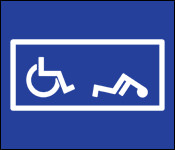 |
| T-Shirts Home Page |
|
Shirts for Jerks: Offensive T-shirts, Rude T-Shirts, Funny T-Shirts.T-Shirts for Jerks - Offensive T-shirts, Rude T-Shirts, Funny T-Shirts.
Offensive T-shirts
A T-shirt (or tee shirt) is a shirt, usually button-less, collar-less, and pocket-less, with a round neck and short sleeves, that is pulled on over the head and covers most of a person's torso. There are also long-sleeved T-shirt and sleeveless T-shirt variants.
T-shirts were originally worn as undershirts. This still occurs, but T-shirts are now also frequently worn as the only piece of clothing on the top half of the body. A T-shirt typically extends to the waist, although one fashion is for "oversized" T-shirts. A more recent trend in women's clothing involves tight-fitting "cropped" T-shirts that are short enough to reveal the lower abdomen including the belly button. T-shirt fashions include styles for men and women, and for all age groups, including baby, youth and adult sizes. T-shirts are often decorated with text and/or pictures. T-shirts are manufactured by the textile industry. They are typically made of cotton or polyester fibers (or a mix of the two), knitted together in a jersey stitch that gives a T-shirt its distinctive soft texture. T-shirt historyThe idea of the T-shirt came to the USA during WWI when US soldiers noticed the light cotton undershirts European soldiers were using while the US soldiers sweated in their wool uniforms. Since they were so much more comfortable they quickly became popular among the Americans, and because of their design they got the name T-shirt. During WWII the T-shirt had become standard issue underwear in both the U.S. Army and Navy. Although the T-shirt was formally underwear, soldiers often used it without a shirt covering it while doing heavy labor or while stationed in locations with a hot climate. As a result, the public was frequently exposed to pictures of members of the armed forces wearing pants and a T-shirt. As an example, the cover of the July 13, 1942 issue of Life magazine, features a picture of a soldier wearing a T-shirt with the text "Air corps gunnery school". After WWII the T-shirt started appearing without a shirt covering it in civilian life. According to the New York Times, the 1948 presidential campaign of Thomas E. Dewey produced a "Dew It for Dewey" T-shirt, which was followed in 1952 by "I Like Ike" T-shirts in support of Dwight D. Eisenhower. John Wayne, Marlon Brando and James Dean all wore them on national TV. At first the public was shocked, but by 1955 it had become acceptable. The T-shirt became cool when James Dean wore it in the film Rebel Without a Cause. T-shirt decorationIn the 1960s, the Ringer T-shirt appeared and became a staple fashion for youth and rock-n-rollers. People also started to tie-dye and screen-print the basic T-shirt and variants such as the tank top, A-shirt (with the nickname "wife beater"), muscle shirt, scoop neck, V-neck etc. became popular. Since then T-shirts have become a medium for self-expression and advertising, with any imaginable combination of words, art and even photographs on display. Other methods of decoration used on T-shirts include airbrush, embroidery, and ironing on either flock lettering, heat transfers, or Dye Sublimation transfers. Laser printers are capable of printing on plain paper using a special toner containing sublimation dyes which can then be permanently heat-transferred to T-shirts. The most common form of commercial t-shirt decoration is screen-printing. Shirts 4 Jerks uses this method. In screen-printing, a design is separated into individual colors. Plastisol or water based inks are applied to the shirt through mesh screens which limits the areas where ink is deposited. In most commercial t-shirt printing, the specific colors in the design are used. To achieve a wider color spectrum with a limited number of colors, process printing (using only cyan, magenta, yellow and black ink) or simulated process (using only white, black, red, green, blue, and gold ink) is effective. Process printing is best suited for light colored shirts. Simulated process is best suited for dark colored shirts. Since the late 1980s and especially the 1990s, T-shirts with prominent brand-name logos have been popular, especially with teenagers and young adults. These garments allowed consumers to flaunt their taste in designer brands in an inexpensive way, in addition to being decorative. Examples include Calvin Klein, FUBU, Ralph Lauren, and The Gap. The late 1990s saw the renewed popularity of T-shirts with slogans and designs, with a strong inclination to the humorous and/or ironic. The trend has only increased in this decade; embraced by celebrities, such as Britney Spears and Paris Hilton, and reflected back on them, too ('Team Aniston'). The story of the message tee embraces the modern phenomenon of "personal branding" (indicating, in this case, the wearer’s sense of humor), as well as a climate in which statements - political or personal - are generally preferred to be catchy than true . Notable was the popularity of political slogans and messages on T-shirts coinciding with the presidential election. The political and social statements that T-shirts often display have become, since the 1990s, one of the reasons that they have so deeply permeated different levels of culture and society. The statements also may be found to be offensive, shocking or pornographic to some. Many different organizations have caught on to the statement-making trend, including chain and independent stores, websites, and schools. |
| Copyright © Shirts 4 Jerks | Privacy Policy Graphic Design by Silver Scope Web Design in St. Louis, MO |



